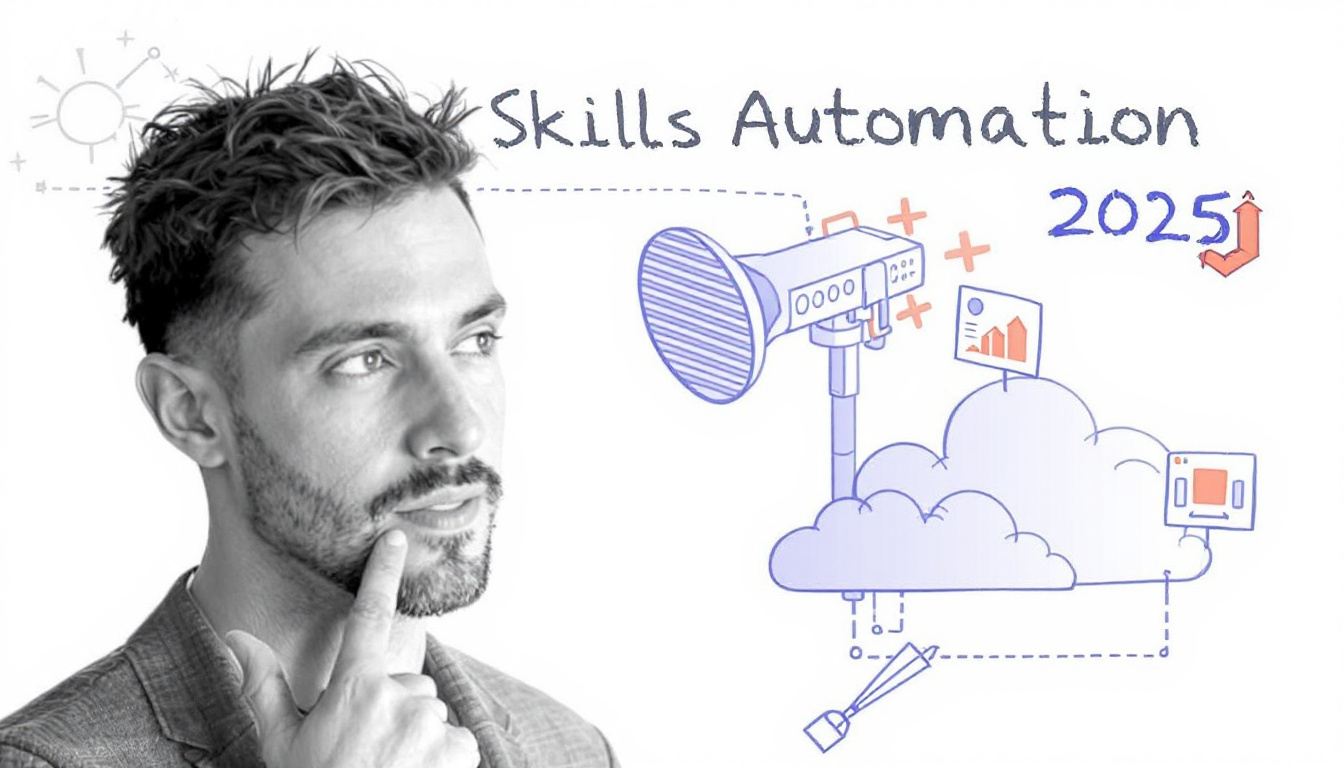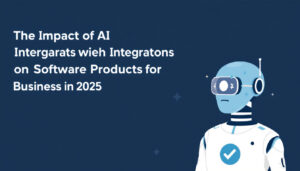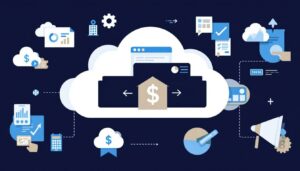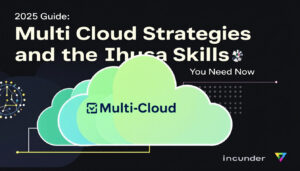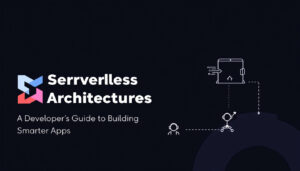Cloud automation is reshaping how organizations manage applications and workflows heading into 2025. Advances in artificial intelligence and scalable infrastructure have raised the expectations for both efficiency and responsiveness. For IT professionals, developers, and business leaders, building practical skills in this domain is not just beneficial, but necessary to remain competitive.
Current trends show that organizations are prioritizing automation for its ability to reduce manual tasks and optimize costs. AI-driven solutions and cloud-native tools continue to drive broader adoption. Upskilling in these areas equips teams to respond faster to market changes, deliver reliable solutions, and maintain robust operations as demands evolve.
Understanding what practical cloud automation involves—and why it matters—is essential for those looking to move forward. For additional insight on trends and the changing landscape, review the latest guidance on Cloud automation strategies for 2025. This foundation ensures the skills built now will remain relevant as technology advances. “Cloud Skills Automation 2025: Step-by-Step Guide to Building Real Skills”
Understanding the 2025 Cloud Automation Landscape
The future of cloud automation is being shaped by the rapid introduction of artificial intelligence, a renewed focus on operational cost control, and the pressure to deliver new services faster. As we approach 2025, organizations are adapting strategies and redefining roles across IT, development, and business. This section reviews the latest trends and how evolving responsibilities impact skill building for professionals.
Key Trends Fueling Cloud Automation
 Photo by Jakub Zerdzicki
Photo by Jakub Zerdzicki
Cloud automation in 2025 relies on three major drivers:
- AI Integration: Automation is no longer just scripts and scheduling. Artificial intelligence augments routine processes, enabling systems to analyze, adapt, and optimize in real time. Modern AI tools like predictive analytics and intelligent workflow engines are essential for managed service providers, offering proactive monitoring and response. This transformation is expected to continue as described in How Managed Service Providers are Using AI Automation, with solutions that can react before issues disrupt operations.
- Cost Control: Cloud cost optimization has become as important as security and uptime. Overprovisioning and resource mismatch create operational inefficiencies that are difficult to ignore. Smarter automation targets waste reduction and ensures that every deployed resource serves a clear business goal. According to 90+ Cloud Computing Statistics: A 2025 Market Snapshot, matching the right services to workloads remains a core challenge for most organizations.
- Speed and Efficiency: The expectation to deliver new features without delay has never been higher. Automation tools are being adopted to reduce deployment times, eliminate manual errors, and free technical teams for higher-level work. As highlighted in the internal guide Cloud automation strategies for 2025, organizations succeed when they automate repeatable and time-consuming tasks.
Emerging trends emphasize that automation must keep up with ever-increasing user demands and a competitive market, while reducing the burden on IT teams.
Evolution of Roles: IT, Development, and Business
Roles across IT, development, and business are shifting to accommodate the new demands of automated cloud environments. Traditional boundaries are fading, giving way to collaborative, multi-skilled teams.
- IT Professionals are required to move beyond system administration and embrace skillsets in scripting, DevOps, and AI-driven operations. The demand for automation architects and cloud analysts continues to rise.
- Developers are now expected to design solutions with automation in mind from the start. They integrate infrastructure-as-code, adapt to continuous delivery pipelines, and work closely with operations to maintain uptime and security.
- Business Leaders must understand automation’s strategic value. Decision-makers collaborate with technical teams to align investments, minimize costs, and achieve scalability.
In 2025, roles are being redefined by technology’s evolution, as covered by the World Economic Forum. There is a growing need for digital fluency, strategic thinking, and adaptability in the workforce. The Key Changes in the Tech Job Market in 2025 summarize how new technology is driving this shift, transforming both career paths and the underlying skills required.
Skill development strategies must reflect these changes. Team members able to work across disciplines and adopt new tools quickly will be the most successful as the cloud automation landscape matures. For more on aligning team roles with cloud automation best practices, see Cloud automation strategies for 2025.
Essential Practical Skills for Cloud Automation
Cloud automation demands more than technical awareness. To operate efficiently in 2025, you need hands-on proficiency with tools, a strong sense of security, and the agility to connect systems using AI and APIs. Each area is a core pillar for specialists, IT teams, and developers working to meet organizational needs and industry standards.
Proficiency with Automation Tools and Platforms
Mastery of key automation tools and cloud platforms forms the cornerstone of practical skill-building. Today’s most widely-used platforms include:
- Amazon Web Services (AWS)
- Microsoft Azure
- Google Cloud Platform (GCP)
- VMware vSphere
Within these environments, automation is driven by tools such as:
- Terraform and Pulumi for infrastructure as code
- Ansible, Chef, and Puppet for configuration management
- Jenkins, GitLab CI/CD, and GitHub Actions for continuous integration and delivery
- Docker and Kubernetes for container management and orchestration
Skill with these tools is non-negotiable for cloud practitioners. Workflows that use scripting and version control allow teams to automate deployments, manage environments, and recover quickly from incidents. DevOps practices are now standard, blending development and operations for product delivery. Cloud automation strategies for 2025 describes how aligning CI/CD, infrastructure as code, and automation tools builds a more reliable pipeline.
For a wider view of in-demand automation skill sets and the platforms shaping cloud careers, review the Top 25 cloud computing skills to boost your career in 2025.
Security-First Mindset in Automation
Automation increases consistency and speed, but it can also introduce risks if security is not prioritized. Integrating security at each step is essential. Automated tasks should protect data, enforce access controls, and prevent misconfigurations.
Key elements of a security-driven approach include:
- Identity and access management (IAM)
- Encryption of data in transit and at rest
- Audit logs and real-time monitoring
- Automated compliance checks
Many organizations adopt a “shift-left” strategy, embedding security controls early in development pipelines. Automated scripts and templates should undergo regular review to reduce vulnerabilities. Key resources like the Cloud-Based Product Security 2025 feature practical recommendations for securing automation workflows.
For a checklist covering essential cloud security components, the Cloud Security Checklist for 2025 details steps that help prevent common automation pitfalls.
AI, APIs, and Integration Skills
 Photo by Mikhail Nilov
Photo by Mikhail Nilov
Sophisticated cloud ecosystems require the ability to connect, communicate, and automate across products and services. Skills in artificial intelligence (AI) and application programming interfaces (APIs) are now mandatory for cloud automation professionals.
- AI Integration: Automating resource allocation, anomaly detection, and predictive analytics relies on embedding AI models. Practical experience with AI frameworks—such as TensorFlow and PyTorch—enhances automation capability and business value.
- API Management: Connecting diverse services across clouds or with legacy systems means working with RESTful APIs, authentication (OAuth, tokens), and integration patterns. Robust API skills make it possible to automate workflows and orchestrate services without manual intervention.
- Integration Tools: Platforms like Zapier, Mulesoft, and native cloud connectors facilitate low-code automation and inter-service orchestration.
Combined, these skills build a foundation for scalable, adaptive systems. As new services appear and workloads grow in complexity, the capacity to integrate AI and manage APIs determines organizational agility. For more technical context, explore Top 10 Essential Skills for a Cloud Engineer in 2025 for a list of supporting core competencies in this area.
Learning Paths and Practical Experience
Building hands-on skills in cloud automation takes a structured approach. Balancing formal training with real-world projects helps professionals—across IT, development, and business—move from theory to application. As automation practices become integral to organizational success, combining reputable courses and practical experience becomes critical for career advancement. This section outlines proven strategies for effective skill development in 2025.
Structured Learning and Certification Opportunities
Selecting the right mix of courses and certifications is essential for mastering cloud automation. Major platforms like AWS, Azure, and Google Cloud all provide role-based learning paths. Vendor certifications—including AWS Certified Solutions Architect, Microsoft Certified: Azure Administrator Associate, and Google Cloud Professional Cloud DevOps Engineer—signal both experience and practical ability.
For those starting out or looking to upskill, leading online platforms such as Coursera, Udemy, and Pluralsight offer comprehensive programs. These usually include:
- Video lectures and guided exercises
- Interactive labs and simulated scenarios
- Capstone projects based on common industry tasks
- Practice exams that match certification formats
Professionals are encouraged to choose courses that embed automation practices across areas such as orchestration, infrastructure as code, and cloud security. Cybersecurity training is also highly recommended, as modern cloud environments demand a strong understanding of automated defenses and secure configuration. Many security-focused programs now incorporate automation modules, blending two high-demand skillsets.
For an overview of timely, specialized training, refer to the Top Cybersecurity Courses for 2025. These programs often include content on automating cloud security controls and integrating secure practices into DevOps workflows.
In addition, platforms with virtual labs allow candidates to deploy real cloud resources, automate provisioning, and troubleshoot issues. This approach builds strong problem-solving abilities, preparing learners to adapt quickly in changing technical environments.
Hands-On Projects and Building a Portfolio
Hands-on experience is the cornerstone of competence in cloud automation. Setting up real projects reinforces theoretical knowledge and demonstrates capability to prospective employers or clients. Practical work may include:
- Designing and automating cloud infrastructure for a sample company
- Creating CI/CD pipelines using Jenkins, GitHub Actions, or GitLab
- Implementing serverless workflows with AWS Lambda or Azure Functions
- Integrating monitoring tools and auto-remediation scripts
- Securing cloud environments through automated compliance policies
Documenting each project is as important as the work itself. Effective portfolios include:
- Project Overviews: Summaries of objectives, tools used, and key outcomes
- Screenshots or architecture diagrams: Visual evidence of execution and design logic
- Source code: Hosted on platforms like GitHub, with clear README files
- Results and lessons learned: Brief discussions of challenges faced and solutions developed
A well-presented portfolio makes skills tangible to employers, showcasing initiative and continuous improvement. Incorporating metrics—such as time saved through automation or cost reductions achieved—adds credibility.
Professionals should consider publishing detailed write-ups or case studies on blogs or LinkedIn. This not only serves as personal documentation, but also builds a reputation within the cloud community.
For those interested in upcoming technical innovations, reviewing resources like Digital Product Trends for IT in 2025 provides insights on skills that will remain relevant as the field grows. These resources often highlight new areas where automation and integration drive results, helping guide which projects to pursue next.
By combining structured learning with practical effort, professionals across IT, development, and business roles can build a solid foundation for leadership in cloud automation.
Best Practices for Continuous Growth in Cloud Automation
Adopting continuous growth habits in cloud automation ensures you remain effective and competitive as technology progresses. Cloud automation is more than a technical specialty; it is a discipline that rewards collaboration, adaptation, and a commitment to professional development. The following sections offer targeted guidance for maintaining steady progress in your skills, network, and awareness of changing tools and standards.
Upskilling, Community, and Networking: Recommend communities, conferences, and industry resources
 Photo by Ivan Samkov
Photo by Ivan Samkov
Active engagement with cloud automation communities unlocks ongoing learning and professional opportunities. By joining peer groups, you gain access to new perspectives, industry updates, and technical resources. The most successful professionals continually expand their network and knowledge.
Key avenues for professional growth include:
- Industry Conferences: Annual events like AWS re:Invent, Microsoft Ignite, and Google Cloud Next host expert-led sessions, hands-on labs, and networking opportunities. Attendance, either in-person or virtual, paves the way for exposure to new cloud services and best practices.
- Online Communities: Forums such as Stack Overflow, Reddit’s r/cloud, and DevOps-specific communities offer real-time Q&A, troubleshooting, and peer support. LinkedIn groups focused on cloud automation and DevOps also facilitate industry connections.
- Specialized Webinars and Workshops: Many vendors and training platforms run regular sessions on automation trends, security, and integration tools. These complement formal courses and certifications.
Access to premium guides, templates, and troubleshooting resources continues to grow. Review the Top digital products for IT pros to sell in 2025 for a list of resources, communities, and support forums that benefit both experienced and emerging professionals.
For actionable best practices from industry leaders, see this in-depth overview of 18 Best Practices for Cloud Automation. These guidelines highlight daily habits and emerging skills that contribute to ongoing growth in the cloud automation field.
Staying active in these networks not only supports technical upskilling, it encourages the sharing of case studies and challenges, which benefits the entire community. Incorporating advice from experienced practitioners and industry contributors accelerates progress and maintains professional relevance.
Adapting to Evolving Technologies and Standards: Emphasize adaptability as cloud tools and standards shift every year
Cloud automation technology and standards never remain static. Annual changes to tools, APIs, regulatory expectations, and security models demand ongoing flexibility from practitioners. Adaptability is not optional; it is a core part of resilience in any modern cloud automation role.
To respond to these shifts, adopt the following strategies:
- Regularly monitor updates to your primary cloud platforms and automation tooling.
- Attend industry conferences and vendor briefings for previews of upcoming features or compliance requirements.
- Revisit foundational concepts often, ensuring your skills remain compatible with new versions of standard tools.
- Experiment with new APIs and services within controlled environments to stay confident in applying new features at work.
Internal knowledge sharing also offers practical advantages. Many organizations promote peer briefings and postmortems to review the impact of tool changes and standard shifts. Documenting successful adaptations and sharing lessons learned support both individual and team growth.
Align your skill development with broader trends to avoid surprises. Guidance on digital transformation, automation, and tech standards is detailed in Digital product trends for IT pros 2025, which examines how automation intersects with wider industry change.
For further insight, refer to these expert-driven resources:
- Cloud Infrastructure Automation: Best Practices offers proven approaches for adapting workflows in hybrid cloud and multi-cloud settings.
- Build a Cloud Automation Practice for Operational Excellence explains how to apply best practices in automation and stay proactive as technologies progress.
Professionals who stay engaged, foster adaptability, and frequently review emerging trends will be best positioned to achieve sustainable growth in their cloud automation careers.
Conclusion
Building practical skills in cloud automation sets professionals apart across IT, development, and business roles. These abilities lead to stronger efficiency, cost control, and improved security in any organization. They also help teams respond to changing technology and market needs with greater confidence.
Now is the ideal time to begin or deepen your automation learning path. Professionals who start today will position themselves to lead tomorrow’s projects and drive measurable business results. Staying committed to growth supports long-term career advancement and personal development.
For those seeking similar strategies to highlight their technical expertise, consider these guidance points on Interview Success 2025 Tips. Thank you for exploring this essential topic—share your experiences or plans for building your own cloud automation skills as you prepare for the future.

